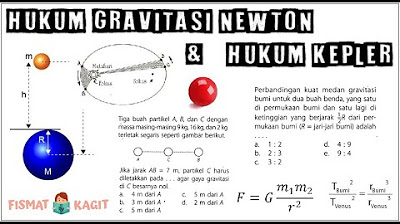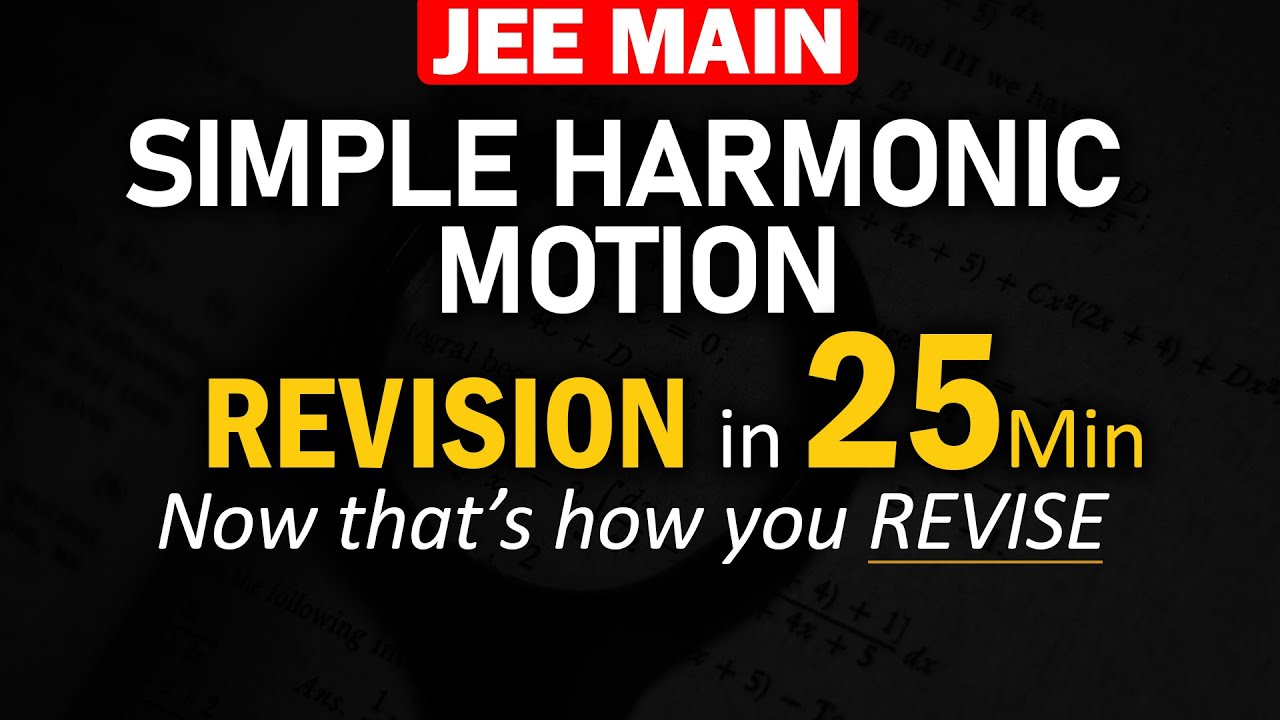September 27, 2024
Summary
TLDRIn this lecture, the instructor addresses the technical issues faced during the initial recording and provides an overview of key physics concepts, such as gravitational attraction, Kepler's laws, simple harmonic motion, and sound waves. The teacher also discusses a recent achievement test, explaining the correct answers to both multiple-choice and problem-solving questions. The focus is on problem-solving techniques, including formulas and equations related to mass, frequency, and speed. The instructor emphasizes the importance of solving problems thoroughly, encourages students to review materials, and highlights areas for improvement in understanding key concepts.
Takeaways
- 🎧 The speaker encountered audio issues with their headset and had to use the laptop's built-in microphone and speaker, which may result in background noise.
- 📝 The second Achievement Test is divided into 50% multiple choice and 50% problem-solving, with questions drawn from prior quizzes and skills-building activities.
- 🧠 The speaker emphasizes that problem-solving questions in the test are based on previously covered material, with only minor changes in the numbers.
- 🔍 The speaker explains concepts related to gravitational attraction, simple harmonic motion, escape velocity, Kepler's laws, and Newton’s universal law of gravitation.
- 📊 In the test, students are required to show complete solutions to problem-solving questions, and simply writing the given values will not be enough to earn points.
- 💡 The speaker provides detailed explanations for several multiple-choice questions, such as those involving gravitational force, motion, sound waves, and Doppler effect.
- 🖋 The speaker highlights the importance of using pen instead of pencil in problem-solving sections to avoid issues with potential answer changes.
- 🔄 Several problems were discussed with a focus on applying specific formulas, including those for angular frequency, wave speed, and gravitational force.
- 🔧 Students are encouraged to practice solving physics problems, as the nature of the subject demands a strong understanding of equations and problem-solving techniques.
- 📚 For problem-solving questions, the speaker walks through several examples, explaining the formulas and approach needed to solve for unknowns such as mass, radius, and speed.
Q & A
What issue does the speaker face at the beginning of the recording?
-The speaker mentions a problem with their headset, which caused a previous recording to have no audio. They are re-recording using their laptop's speaker and microphone.
What is the format of the second Achievement Test mentioned in the recording?
-The second Achievement Test is divided into two parts: 50% multiple-choice questions and 50% problem-solving questions.
How does the speaker ensure students have already encountered the problem-solving questions in the test?
-The speaker explains that the problem-solving questions are based on previous quizzes, skills-building activities, or class examples, with only the numbers changed.
What happens to the gravitational force between two objects as they get closer to each other, according to the speaker?
-As two objects move closer to each other, the gravitational force between them increases, following the inverse relationship between force and distance as described by Newton's law of universal gravitation.
How does the speaker describe the motion of a mass on a spring?
-The speaker describes it as simple harmonic motion, where the maximum displacement from the equilibrium position is called the amplitude.
What formula does the speaker mention for calculating frequency and how is it applied?
-The formula mentioned is f = 1 / T, where f is the frequency and T is the period. The example given is calculating frequency when the period of motion is 2 seconds, resulting in a frequency of 0.5 Hz.
What factors affect the speed of sound in air, according to the speaker?
-The speed of sound in air is affected by the properties of the medium (solid, liquid, or gas), temperature (higher temperature increases speed), and pressure.
What is the Doppler effect, as explained by the speaker?
-The Doppler effect occurs when the source of sound is in motion relative to the observer. The speaker mentions that the frequency perceived by the observer depends on whether the source is moving toward or away from them.
How does the speaker instruct students to solve the problem-solving questions on the test?
-The speaker advises students to write down the given information, apply the correct formulas, and show their work step by step. Simply writing down the given data without attempting the solution will not earn points.
What key concept does the speaker emphasize about Kepler's laws?
-The speaker explains that Kepler's first law states that planets move in elliptical orbits with the Sun at one of the foci, challenging the old idea of circular orbits with the Sun at the center.
Outlines

このセクションは有料ユーザー限定です。 アクセスするには、アップグレードをお願いします。
今すぐアップグレードMindmap

このセクションは有料ユーザー限定です。 アクセスするには、アップグレードをお願いします。
今すぐアップグレードKeywords

このセクションは有料ユーザー限定です。 アクセスするには、アップグレードをお願いします。
今すぐアップグレードHighlights

このセクションは有料ユーザー限定です。 アクセスするには、アップグレードをお願いします。
今すぐアップグレードTranscripts

このセクションは有料ユーザー限定です。 アクセスするには、アップグレードをお願いします。
今すぐアップグレード関連動画をさらに表示

Pengantar Materi Getaran dan Gelombang pada Mata Kuliah Fisika Dasar ITK 2020/2021

Introduction|Gravitation|Physics 11|Tamil|MurugaMP

GRAVITAÇÃO UNIVERSAL AULA 01

Physics Waves: Frequency & Wavelength FREE Science Lesson

HUKUM NEWTON TENTANG GRAVITASI & HUKUM KEPLER | FISIKA KELAS 10

Simple Harmonic Motion | Formulae and Concept REVISION in 25 min | JEE Physics by Mohit Sir (IITKGP)
5.0 / 5 (0 votes)
